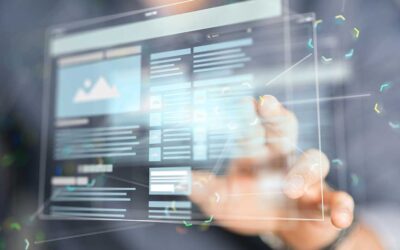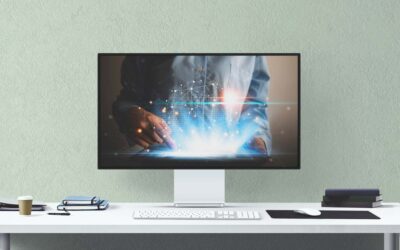LAMs are More Alike Than Different: Physical vs Digital Nature of the Work

Rachael Cristine Woody
At SLA 2020, Lucidea hosted a panel titled LAMS: More Alike Than Different, with panelists Margot Note, Sonya Fogg, and Rachael Woody (myself). The discussion offered much to dig into; this is Part 3 of the miniseries wherein I present the four main issues we covered and my response to them.
Those issues are: disaster preparedness, precarious labor, the physical versus digital nature of the work, and generational change.
When the Libraries Archives Museums (LAM) panel was initially planned it was pre-COVID and we already had several large issues we wanted to tackle. While the onset of the pandemic didn’t change the entirety of our focus, it did lend an additional lens to view the challenges and opportunities LAMs face together.
This post will focus on the third of four issues: Physical VS Digital Nature of the Work.
You can review the previous posts here:
LAMs are More Alike Than Different: Precarious Labor
LAMs are More Alike Than Different: Disaster Preparedness
Lucidea’s Prompt:
Discuss the physical nature of the work versus the virtual nature of the work. Where’s the balance in terms of providing collections and services online as well as other collection work that can be performed in a digital space?
To Begin With…
To begin this conversation, I invite you to think about what it is that people visit us for? When they travel to see us, what does that visit look like? What is our mission and what does it look like to carry out that mission and serve them? For museums, it’s to provide visitors with a combination of education, enjoyment, inspiration, and reprieve. While it’s easy to think about how we carry this out in a physical world, I challenge you to think about how we can translate that physicality to a completely digital setting.
A Shift in Prioritizing Virtual Over Physical
COVID-19 has shifted how we prioritize physical versus digital work. Historically, digital has been an after-thought for LAMs, or at least not as well funded as the physical work. But with COVID-19, online became the only access point to the collections, and the only space for us to engage with the community.
Forcing a Re-evaluation of Resource Allocation
COVID-19 and our subsequent shift to all things online has forced us to rethink resource allocation. We’ve seen this play out on a larger scale with Silicon Valley tech giants not just shutting down for COVID, but selling their buildings and committing to remote work for the foreseeable future. With COVID-19 came the challenge to conduct “business as usual” in a virtual way and I think we’re seeing a rebalancing occur as a result.
What Does this Portend?
Given that LAMs can reach more people virtually than they can physically—which is true even when it’s not a pandemic—I would like to see the scales tip from prioritizing funding from physical work to digital work. I would like to see LAMs invest more in digital collections and online engagement.
Advice to Get Through
It’s time to assess your digital collections and reallocate resources (staff time and CMS money) to make sure you’re delivering the best virtual collection experience you can. Make sure your CMS is working hard for you, and make sure you’re using every tool and feature available to you to engage with your audience.
Additional Reading
For more information and resources on museums navigating remote work, evaluating digital programs, and carrying out digitization projects, please see these posts from Lucidea’s Think Clearly Blog:
The Tools Needed to Support Remote Museum Staff
Prioritize These Remote Museum Projects During Coronavirus—Part 1
Prioritize These Remote Museum Projects During Coronavirus—Part 2

Rachael Cristine Woody
Expert Rachael Cristine Woody advises on museum strategies, collections management, and grant writing for a wide variety of clients. In addition to following the links in this post, learn about Lucidea’s Argus solution for virtual presentation of collections, visitor engagement, and museum staff productivity and impact.
Similar Posts
Exploring No-Code Digital Storytelling: Hoover’s “Fanning the Flames” Exhibit
Explore no-code digital storytelling with Hoover’s ‘Fanning the Flames’ exhibit. See how interactive tools (Deep Zoom Color Compare & Hot Spot) enhance user engagement and the visual experience.
An Introduction to Scrollytelling for Museums
Discover how museums use scrollytelling and digital storytelling platforms to create immersive narratives. This introduction explores key concepts and approaches to interactive storytelling.
Exploring Self-Determinate Multiple Pathways: An Example of Digital Storytelling
Discover how self-determinate multiple pathways offer flexible interactive storytelling in museum exhibits. Learn from the Tenement Museum’s ‘Your Story Our Story.’
Digital Museum Storytelling Example: A Look at Self-Determinate Linear Pathways
Self-determinate characteristics on a linear pathway go beyond brief sidebar topics and instead offer alternative ways to navigate the linear pathway.






Leave a Comment
Comments are reviewed and must adhere to our comments policy.
0 Comments